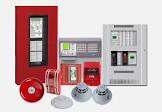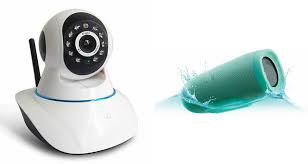Automatic Fire Detection System: Enhancing Safety and Saving Lives
Fire safety is a critical concern in any environment, be it residential, commercial, or industrial. The ability to detect fires quickly and accurately is essential for minimizing damage, protecting lives, and ensuring a swift response from emergency services. This is where automatic fire detection systems play a vital role.
An automatic fire detection system is designed to detect the presence of fire by monitoring various environmental factors such as smoke, heat, or flame. These systems are equipped with sensors that can detect even the slightest changes in these parameters and trigger an alarm or initiate emergency protocols.
One of the primary components of an automatic fire detection system is smoke detectors. These devices are strategically placed throughout a building to sense the presence of smoke particles in the air. When smoke particles are detected, the system immediately alerts occupants by sounding an alarm and relaying information to a central monitoring station or directly to emergency services.
Heat detectors are another crucial component of these systems. They are designed to respond when there is a rapid increase in temperature within a specific area. Heat detectors are particularly useful in environments where smoke detectors may not be suitable due to excessive dust or fumes that could trigger false alarms.
Flame detectors are yet another type of sensor used in automatic fire detection systems. They utilize advanced technology to detect the unique patterns and characteristics of flames. When flames are detected, these detectors send signals to activate alarms and alert relevant authorities.
In addition to detecting fires, modern automatic fire detection systems often incorporate advanced features such as integrated sprinkler systems and gas suppression mechanisms. These additional measures help contain or extinguish fires before they have a chance to spread further.
The benefits of installing an automatic fire detection system cannot be overstated. Firstly, they provide early warning signs that allow occupants to evacuate safely before conditions become hazardous. Secondly, they enable prompt response from firefighters, increasing the chances of controlling and extinguishing fires before they cause extensive damage.
Automatic fire detection systems also offer round-the-clock monitoring, ensuring that any fire-related incidents are immediately reported to the appropriate authorities. This constant surveillance is especially valuable in unoccupied or remote areas where fires may go unnoticed for extended periods.
Furthermore, these systems can be integrated with other safety measures such as emergency lighting and evacuation plans. In the event of a fire, the system can activate emergency lighting to guide occupants to designated exit points, enhancing their chances of a safe escape.
It is important to note that automatic fire detection systems require regular maintenance and testing to ensure their optimal performance. Routine inspections and servicing by qualified professionals are necessary to identify any faults or issues that may compromise the system’s effectiveness.
In conclusion, an automatic fire detection system is a crucial investment for any environment where fire safety is paramount. By swiftly detecting fires and alerting occupants and emergency services, these systems save lives, minimize property damage, and provide peace of mind. When it comes to fire safety, prevention and early detection are key – and automatic fire detection systems are at the forefront of this critical defense.
6 Frequently Asked Questions About Automatic Fire Detection Systems
- How does an automatic fire detection system work?
- What are the benefits of installing a fire detection system?
- What types of automatic fire detection systems are available?
- How often should I test my automatic fire detection system?
- How do I know if my automatic fire detection system is working properly?
- What safety measures should I take when using an automatic fire detection system?
How does an automatic fire detection system work?
An automatic fire detection system works by continuously monitoring the environment for signs of fire. It consists of several interconnected components that work together to detect and respond to potential fire hazards. Here is a breakdown of how an automatic fire detection system typically operates:
- Sensors: The system is equipped with various types of sensors, such as smoke detectors, heat detectors, and flame detectors. These sensors are strategically placed throughout the protected area or building.
- Detection: The sensors continuously monitor the surrounding environment for specific indicators of fire. When a sensor detects smoke particles, an increase in temperature, or the presence of flames, it sends a signal to the central control panel.
- Central Control Panel: The central control panel is the brain of the system. It receives signals from the sensors and processes the information to determine if there is a potential fire event.
- Alarm Activation: If the central control panel confirms a potential fire event based on input from multiple sensors or predefined thresholds, it activates an alarm system. This can include audible alarms, visual indicators such as flashing lights or strobes, and even automated voice instructions guiding occupants to evacuate.
- Notification: In addition to activating local alarms within the premises, modern automatic fire detection systems can also notify off-site monitoring stations or emergency services directly. This ensures that help is dispatched promptly.
- Emergency Response: Upon receiving notification from the automatic fire detection system, emergency services can quickly respond to the incident location with all necessary resources and personnel.
- Integration with Suppression Systems: Some automatic fire detection systems are integrated with suppression systems like sprinklers or gas suppression mechanisms. In case of confirmed fire detection, these systems can automatically activate to suppress or extinguish the flames before they spread further.
- Monitoring and Maintenance: Automatic fire detection systems often have built-in monitoring capabilities that allow for continuous surveillance and remote management by authorized personnel or monitoring companies. Regular maintenance and testing are crucial to ensure the system’s reliability and effectiveness.
It’s important to note that the specific functioning of an automatic fire detection system may vary depending on the manufacturer, system design, and the specific requirements of the environment it is installed in. However, the fundamental principle remains consistent: detecting potential fire hazards early and triggering appropriate responses to protect lives and property.
What are the benefits of installing a fire detection system?
Installing a fire detection system offers numerous benefits that contribute to the overall safety and protection of a building or environment. Here are some key advantages:
- Early Fire Detection: Fire detection systems are designed to detect fires at their earliest stages, often before they become visible or produce significant smoke. This early warning enables occupants to evacuate safely and promptly, minimizing the risk of injury or loss of life.
- Rapid Response: Once a fire is detected, the system immediately triggers alarms, alerting occupants and emergency services. This swift response allows firefighters to arrive on the scene quickly, increasing the chances of controlling and extinguishing the fire before it spreads and causes extensive damage.
- Minimized Property Damage: By detecting fires early and facilitating prompt response, fire detection systems help minimize property damage. They provide valuable time for occupants to take necessary actions, such as activating sprinkler systems or using fire extinguishers, which can help contain or suppress the fire until professional help arrives.
- Protection of Valuables: In commercial or industrial settings, installing a fire detection system helps protect valuable assets such as equipment, inventory, documents, and data. Early detection allows for immediate action to safeguard these assets from potential fire-related destruction.
- Reduced Business Interruption: Fires can lead to significant disruptions in business operations due to property damage and downtime required for repairs. A fire detection system helps minimize business interruption by enabling swift response and containment measures that limit the extent of damage and facilitate faster recovery.
- Enhanced Safety Measures: Fire detection systems often incorporate additional safety features such as integrated sprinkler systems or gas suppression mechanisms. These measures can automatically activate in response to a detected fire, helping control or extinguish it before it escalates further.
- Remote Monitoring Capabilities: Many modern fire detection systems offer remote monitoring capabilities through connected devices or central monitoring stations. This allows for continuous surveillance even in unoccupied areas or during non-working hours, ensuring that any fire-related incidents are immediately reported to the appropriate authorities.
- Compliance with Regulations: Fire detection systems are often a requirement for compliance with building codes, insurance policies, and occupational health and safety regulations. Installing a fire detection system ensures adherence to these standards and helps avoid potential legal or regulatory issues.
- Peace of Mind: Knowing that a reliable fire detection system is in place provides peace of mind to occupants, building owners, and managers. It instills confidence that proactive measures are taken to mitigate the risks associated with fires, creating a safer environment for everyone.
In summary, the benefits of installing a fire detection system include early fire detection, rapid response, minimized property damage, protection of valuables, reduced business interruption, enhanced safety measures, remote monitoring capabilities, compliance with regulations, and peace of mind. Investing in such a system is crucial for safeguarding lives and property from the devastating effects of fires.
What types of automatic fire detection systems are available?
There are several types of automatic fire detection systems available, each designed to detect fires based on specific parameters. Here are some common types:
- Smoke Detectors: Smoke detectors are the most widely used type of fire detection system. They utilize optical or ionization sensors to detect the presence of smoke particles in the air. Optical smoke detectors use a light source and a photosensitive receiver to detect changes in light caused by smoke, while ionization smoke detectors use a small radioactive source to ionize the air and detect changes in conductivity caused by smoke particles.
- Heat Detectors: Heat detectors are designed to respond to rapid increases in temperature. They can be either fixed temperature heat detectors, which activate when a specific temperature threshold is reached, or rate-of-rise heat detectors, which activate when the temperature rises above a certain rate within a specified time period.
- Flame Detectors: Flame detectors use specialized sensors that can identify the unique patterns and characteristics of flames. These detectors are highly sensitive and can quickly detect flames even in challenging environments with high background radiation or strong sunlight.
- Gas Detectors: Gas detectors are used to monitor the presence of specific gases that may indicate a potential fire hazard, such as carbon monoxide (CO) or carbon dioxide (CO2). These detectors can provide early warning signs of combustion or gas leaks before a fire actually occurs.
- Aspirating Smoke Detection Systems: Aspirating smoke detection systems (ASDs) use a network of pipes with sampling holes connected to a central unit. The system continuously draws air samples from different areas and analyzes them for the presence of smoke particles. ASDs offer early detection capabilities and can be highly sensitive in detecting even small amounts of smoke.
- Video-Based Fire Detection Systems: Video-based fire detection systems utilize advanced video analytics algorithms to analyze live video feeds from surveillance cameras for signs of flames or smoke patterns. These systems can quickly identify potential fire incidents and trigger appropriate alarms or notifications.
- Beam Detectors: Beam detectors consist of a transmitter and receiver unit that emit a beam of light across a designated area. When smoke particles interrupt the beam, the detector triggers an alarm. Beam detectors are commonly used in large spaces such as warehouses or atriums.
It’s important to note that different environments and applications may require specific types of fire detection systems or a combination of multiple systems to provide comprehensive coverage. Consulting with fire safety professionals can help determine the most suitable automatic fire detection system for a particular setting.
How often should I test my automatic fire detection system?
Testing your automatic fire detection system is crucial to ensure its proper functioning and reliability. The frequency of testing may vary depending on factors such as the type of system, local regulations, and the specific environment in which it is installed. However, here are some general guidelines to consider:
- Regular Testing: It is recommended to conduct a basic functionality test on a monthly basis. This involves activating a manual call point or using a test key to simulate an alarm condition and ensure that all connected devices, such as smoke detectors and alarm panels, are functioning correctly.
- Annual Inspection: In addition to regular testing, it is advisable to have a professional inspection conducted at least once a year. Certified technicians can perform more comprehensive tests and inspections to verify the overall integrity of the system, including checking for any faults or deficiencies.
- Manufacturer’s Recommendations: Always refer to the manufacturer’s guidelines and recommendations for your specific fire detection system. They may provide specific instructions on testing intervals or additional maintenance requirements.
- Local Regulations: Be aware of any local or national regulations that govern fire safety systems in your area. These regulations may stipulate specific testing frequencies or requirements that you must adhere to.
- Record Keeping: Maintain detailed records of all tests and inspections performed on your fire detection system. This documentation will demonstrate compliance with regulatory requirements and serve as a reference for future maintenance.
Remember, regular testing is essential not only for compliance but also for ensuring the safety of occupants and protecting property from potential fire hazards. If you have any doubts or concerns about the testing frequency or procedures for your specific fire detection system, consult with a qualified fire safety professional who can provide expert guidance tailored to your needs.
How do I know if my automatic fire detection system is working properly?
Ensuring the proper functioning of your automatic fire detection system is crucial for maintaining fire safety in your environment. Here are some steps you can take to determine if your system is working properly:
- Regular Inspections: Conduct routine visual inspections of the system components, including smoke detectors, heat detectors, and flame detectors. Look for any signs of damage, such as physical wear and tear or accumulation of dust or debris that may hinder their performance.
- Test Alarms: Regularly test the alarm functionality of your fire detection system. Most systems have a test mode that allows you to activate the alarms without triggering a full-scale emergency response. Follow the manufacturer’s instructions for conducting these tests safely.
- Monitor Control Panel: Check the control panel regularly to ensure it is functioning correctly and receiving signals from all sensors. The control panel should display accurate information about the status of each component and any potential faults or malfunctions.
- Verify Communication: If your fire detection system is connected to a monitoring service or central station, verify that communication between your system and the monitoring center is functioning properly. This can be done by contacting your monitoring service provider and requesting a communication test.
- Check Power Supply: Ensure that all components of the fire detection system are receiving power consistently. Check for any loose connections, tripped breakers, or other electrical issues that may disrupt power supply.
- Maintain Documentation: Keep records of maintenance activities, inspections, and any repairs made to the system. This documentation will help track the history of your fire detection system’s performance and identify any recurring issues.
- Professional Servicing: Schedule regular maintenance visits from qualified professionals who specialize in automatic fire detection systems. They will conduct comprehensive tests, clean sensors if necessary, replace batteries as needed, and address any potential issues before they become major problems.
Remember, it is crucial to follow local regulations and guidelines regarding fire safety inspections and testing procedures specific to your region or industry. Regular maintenance and testing will help ensure that your automatic fire detection system is in optimal working condition, providing you with peace of mind and enhanced fire safety.
What safety measures should I take when using an automatic fire detection system?
When using an automatic fire detection system, it is important to take certain safety measures to ensure its effectiveness and reliability. Here are some key safety measures to consider:
- Regular Maintenance: Schedule regular maintenance and inspections of your fire detection system by certified professionals. This includes checking sensors, batteries, alarms, and control panels to ensure they are in proper working condition.
- Testing and Drills: Conduct regular testing of the system’s functionality, including smoke detectors, heat detectors, and alarms. Test the system at least once a month to verify that all components are operational. Additionally, conduct fire drills to familiarize occupants with evacuation procedures.
- Clear Access: Ensure that the area around detectors and sensors is clear of obstructions such as furniture, curtains, or other objects that could hinder their performance or delay their response.
- Proper Placement: Install smoke detectors in appropriate locations throughout your premises according to manufacturer guidelines or local regulations. Consider placing them near bedrooms, living areas, kitchens, and hallways to maximize coverage.
- Battery Replacement: Replace batteries in smoke detectors and other components as recommended by the manufacturer or when low-battery alerts sound. Regularly check battery levels and replace them proactively to maintain uninterrupted functionality.
- Prompt Response: If the fire detection system triggers an alarm or indicates a fire emergency, respond immediately by following established evacuation procedures. Contact emergency services without delay.
- Educate Occupants: Ensure that all occupants are familiar with the location of fire exits, evacuation routes, assembly points, and how to respond in case of a fire alarm activation. Conduct regular training sessions on fire safety protocols.
- Emergency Contacts: Keep a list of emergency contacts readily available near control panels or in a central location accessible to all occupants.
- Tamper-Proofing: Safeguard your fire detection system against tampering or unauthorized modifications by securing control panels in locked enclosures or restricted-access areas.
- Stay Informed: Keep yourself updated on local fire safety codes, regulations, and best practices. Stay informed about any changes or updates to fire safety standards that may affect your fire detection system.
Remember, an automatic fire detection system is an essential tool for early fire detection, but it should be complemented by other fire safety measures such as properly maintained fire extinguishers, clear evacuation routes, and regular fire safety training. By adhering to these safety measures, you can enhance the effectiveness of your automatic fire detection system and ensure the safety of occupants and property.




